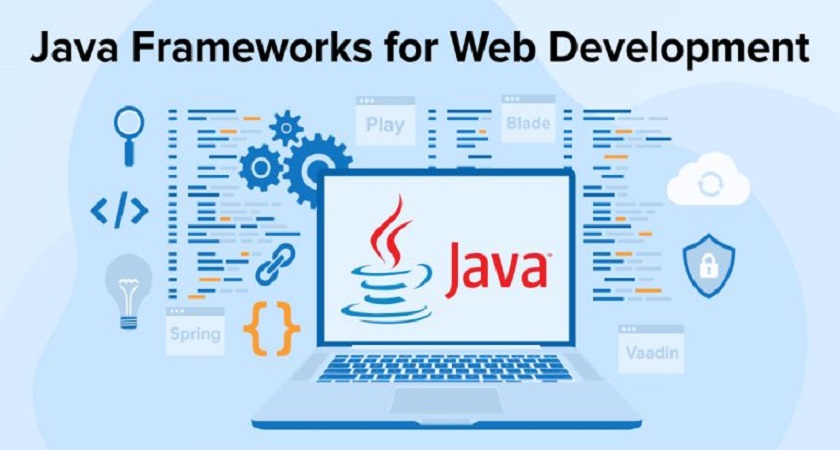Tools for Outreach Campaigns: The 2025 Tech Stack That Books 3× More Demos
Recent data have shown that 21% of the week is being spent on just manual email tasks. This low-impact coping template, managing outreach across scattered tools, and searching for contacts takes much longer than necessary. It wastes a whole day every week. But the pressure to complete every task hits hard and kills our performance. Trying to complete Work manually might lead to inconsistency and failure to grab opportunities. But in 2025, it’s not about sending emails and waiting for replies and opportunities anymore. 2025 has enhanced every step of our outreach process by bringing a new wave of sales and marketing tech. In this blog, we will discuss tools for outreach campaigns and how they can help us enhance our productivity and work smartly.
The 2025 Outreach Stack:
Lead: Find the right people:
At the beginning of the Outreach journey, a targeted lead list is built in 2025. Using outdated contact data sheets might draw you into the ocean of outreach experts. To survive and stand out in the crowd full of outreach professionals, we need little time data in this modern era-based mess and social scraping.
Top 4 tools in 2025 for lead generation:
1. Apollo.io:
Apollo.io is a B2B sales intelligence and engagement platform that provides access to various tools for searching, filtering, engaging, and tracking everything in one place. It helps by offering high-quality, intent-driven contact data, outreach automation, and workflow integration to sales reps, marketers, founders, and SDRs. It’s a comprehensive pipeline-building engine, not just a database.
What is it best for?
- It is best for cold outreach without a sales team, done by founders.
- It is best for startups and scale-ups that need verified emails and phone numbers instantly.
- It is best for the marketing team as it targets the decision makers by role, industry, or company stage.
2. Clay:
Play is a powerful no-code data enrichment and automation tool with a strong emphasis on B2B lead data and AI-powered personalization. It helps us to build up complex workflows visually and involves personalization; it not only finds but also enriches and qualifies the leads.
Key Features:
- AI-Powered Lead Enrichment: Clay pulls data from 50+ sources to enrich contacts with details like job title, company size, LinkedIn URL, email, phone, funding, tech stack, and more — all without writing code.
- No-Code Workflow Builder: Visually build outreach workflows with drag-and-drop blocks. Automate lead sourcing, enrichment, filtering, and scoring in minutes.
- Built-In Personalization: Clay uses GPT-based AI to write hyper-personalized first lines, subject lines, or full emails based on lead data (e.g., LinkedIn activity, recent funding news, job changes).
3. Zoom info:
Zoom info is a B2B platform that helps businesses work with their ideal customers by providing them with data, which can help businesses close their deals and provide services to their ideal customers.
Zoom Info is an intelligence-based platform that provides detailed contact and company information. It also gives intent data and engagement tools for smooth sales and marketing purposes.
4. Phantom Buster:
Phantom Buster is a tool used for web scraping and data automation. It helps users to extract data from websites and perform computerized actions on platforms like Twitter, LinkedIn, Instagram, and many more.
Key features:
- Tasks are performed automatically on schedule for consistent outreach.
- It works with other tools for seamless data flow. Tasks can run on the cloud even when our computer is off.
Enrich:
Contact information is not enough anymore to make our data more valuable and relevant. We need data enrichment tools to stand out in the field of outreach. Data needs to be more personalized and relevant, like adding job changes, recent news mentions, and behavioral signals of every profile.
Top tools for enrichment in 2025:
Clearbit:
Clearbit is a B2B Data enrichment platform that converts customer data into rich company and contact profiles. This helps businesses in finding and understanding their ideal customers because their email addresses, domains, and IPS will be converted into rich company and contact profiles.
Key features:
- It helps with lead generation, Personalized marketing, and sales targeting by pulling real-time data from public and various sources.
- It turns the data from partial information into full profiles with the addition of company information, job titles, company size, industry, and location, etc.
- It reveals the website visitors using their IP addresses, which helps us find out which companies are visiting our website in real time.
Nimble:
Nimble is a social tool that is specifically designed for small businesses and professionals. It is a customer relationship management tool that helps manage the relationships and tracks the communication by pulling contact information and social data into 1 single dashboard.
Key features:
This tool automatically combines and updates the contacts’ details from social media, email, phone, and calendar. It uses AI to automatically fill in the missing information and details like company information, bio, location, etc.
Engage:
Engaging refers to attracting the clients without sounding like a robot because this is where automation meets Human touch.
Engagement tool dominating 2025:
Instantly AI:
Instantly AI is a tool that helps businesses in sending cold emails while making sure that those emails land in the inbox and not the spam folder. It is widely used in sales campaigns, lead generation, and B2B Outreach. Whether you’re just starting or managing a high-volume campaign, Instantly AI ensures your emails land in the inbox, not the junk folder: giving your outreach the best chance of converting into real opportunities.
Key Features:
Email deliverability refers to the delivery of email to the main inbox rather than the spam or promotion folder. The cold emails can get flagged as spam if:
- Send too many emails at once
- If the email account is new or has a low reputation
- If the email content looks spammy
Close:
It is the final step of the stack, so it should be more focused and careful; a slight tenderness can cause a handoff between the marketing and sales, breaking the momentum. In 2025, the closing process is powered by intelligent sales engagement platforms like Outreach.io and SalesLoft, which ensure that no opportunity slips through the cracks. These tools track prospect interactions, automate follow-ups, and provide sales reps with insights into when and how to re-engage.
-
Top close tool in 2025:
Outreach.io:
A platform used for sales engagement for seamless communication between sales teams and prospects. It enhances sales productivity and optimizes outreach efforts.
Key features:
- Records and analyzes sales
- Email automation, from opening an email to replying to emails
- Personalized outreach campaigns
Tools breakdown for smatter outreach:
In 2025, in order to reach and run our successful outreach campaign, it is crucial to understand which tools are beneficial for us. From emailing clients to getting the opportunity to work with them, it needs a strategy and smart work, so for a successful outreach campaign. This blog post will present tools that are helpful for each stage of the funnel.
Cold email: Weed pecker vs. Lem list vs. Instantly:
- Weed pecker: An ideal tool for small teams, which is known for its automation logic and simplicity. High deliverability can be ensured by connecting it easily to the CRM, its ability to personalize and detect replies, and ensuring high deliverability.
- Lem list: A great tool for boosting engagement and offering advanced personalization. This tool allows attachment of videos and images in the emails as well.
- Instantly: It ensures that the emails are sent directly into the inbox rather than reaching the spam folder, which is a great Tool for businesses that send emails in large numbers.
Multi-Chanel: Outreach.io + SalesLoft:
Both of these platforms are used to combine email contacts and other information to personalize the data.
- Outreach.io: A platform used for sales engagement for seamless communication between sales teams and prospects. It enhances sales productivity and optimizes outreach efforts.
- SalesLoft: It makes team management more efficient with its detailed analysis and easy-to-navigate dashboard features.
LinkedIn: Sales Navigator + Rely.io :
- Sales Navigator: Sales Navigator helps sales professionals identify and target prospects using advanced filters like job title, industry, company size, and buying intent. It also provides real-time updates on job changes, company news, and activity insights — all of which can be used to personalize outreach. With InMail and saved lead lists, you can stay organized and engage prospects directly on LinkedIn.
- Rely.io: Rely.io, on the other hand, supercharges your workflow by automating LinkedIn actions such as profile visits, connection requests, follow-ups, and even messaging sequences. It integrates with your CRM and sales tools, ensuring your outreach is both scalable and trackable.
Outreaching on LinkedIn is essential to target decision makers and attract clients. Sales Navigator and Rely.io are grade tools on their own, but pairing these tools offers supercharging in workflow, and not only that, it automates LinkedIn connection requests. Pairing of these tools is a perfect combo for B2B sales teams who are looking to build authentic relationships.
Deliverability Shield: Folderly + Quick Mail’s Inbox rotation:
Folderly is an AI-based platform that examines our domain setup and flags suspicious emails as spam. It is useful for managing multiple accounts.
Quick Mail inbox rotation: It handles our accounts and prevents them from burning out, maintains the sender’s reputation by distributing outreach across multiple inboxes.
Real-world 30-Day playbook:
Launching a campaign is not about using great tools to launch a high-performing campaign; it’s important to build a strategy and execute it successfully. Here is a 30-day tactical playbook that breakdown what’s exactly what needs to be done each week to build your momentum. This will help you warm up your outreach infrastructure.
Day 1-3 (Import data & lead segmentation):
You can use tools like Apollo Zoom Info or Clay, which help by importing verified leads and enriched data, providing verified contacts with job titles, company size, LinkedIn URLs, and industry tags
Leads can be segmented into
- Persona (VP of sales)
- Company type (Start-up, Mid-market, Enterprise)
- Intent data (who visits our website)
Why this matters:
Segmentations allow us to personalize our outreach campaign. It makes our messages more relevant and helps in converting more leads.
Day 4-7: Email domain health check and warm up:
As we have discussed, there are various tools like Folderly and Instantly that warm up our email accounts and send low-volume and highly personalized emails.
Monitors bounce back rates and spam folder placement. Think of this week as building your reputation.
Day 8-30: Sequencing, testing & optimization:
At this point, we are ready to launch our outreach campaign. A strong sequence typically includes:
- Personalized intro email
- LinkedIn connection request
- Follow-up email with value prop
- Soft-touch bump
- Final CTA email
Simultaneously, run tests on:
- Subject lines
- Email body tone (conversational vs. formal)
- CTA style (question vs. direct ask)
Monitor open rates, replies, and positive conversions to identify what’s working. Based on data, optimize sequences weekly. By Day 30, your campaign should be generating replies, booked calls, and valuable insights for your next cycle.
Conclusion:
From lead generation with Apollo, Clay, and ZoomInfo, to enrichment using Clearbit and Nimble, and engagement through Instantly, Outreach.io, and SalesLoft in every step is now powered by automation, data, and AI. Tools like Folderly and QuickMail ensure your emails land where they should, while platforms like Sales Navigator and Rely.io help build relationships on LinkedIn.
But tools alone don’t drive results. Success comes from combining them with strategy: lead segmentation, warming up domains, A/B testing, and continuous optimization. The 30-day playbook is a practical roadmap for teams to ramp up quickly and start booking more demos.
The outreach winners of 2025 are not those who send more emails — but those who send smarter ones. Embrace the new tech stack, personalize at scale, and watch your outreach performance soar. The future of outreach is already here — don’t be left behind.


